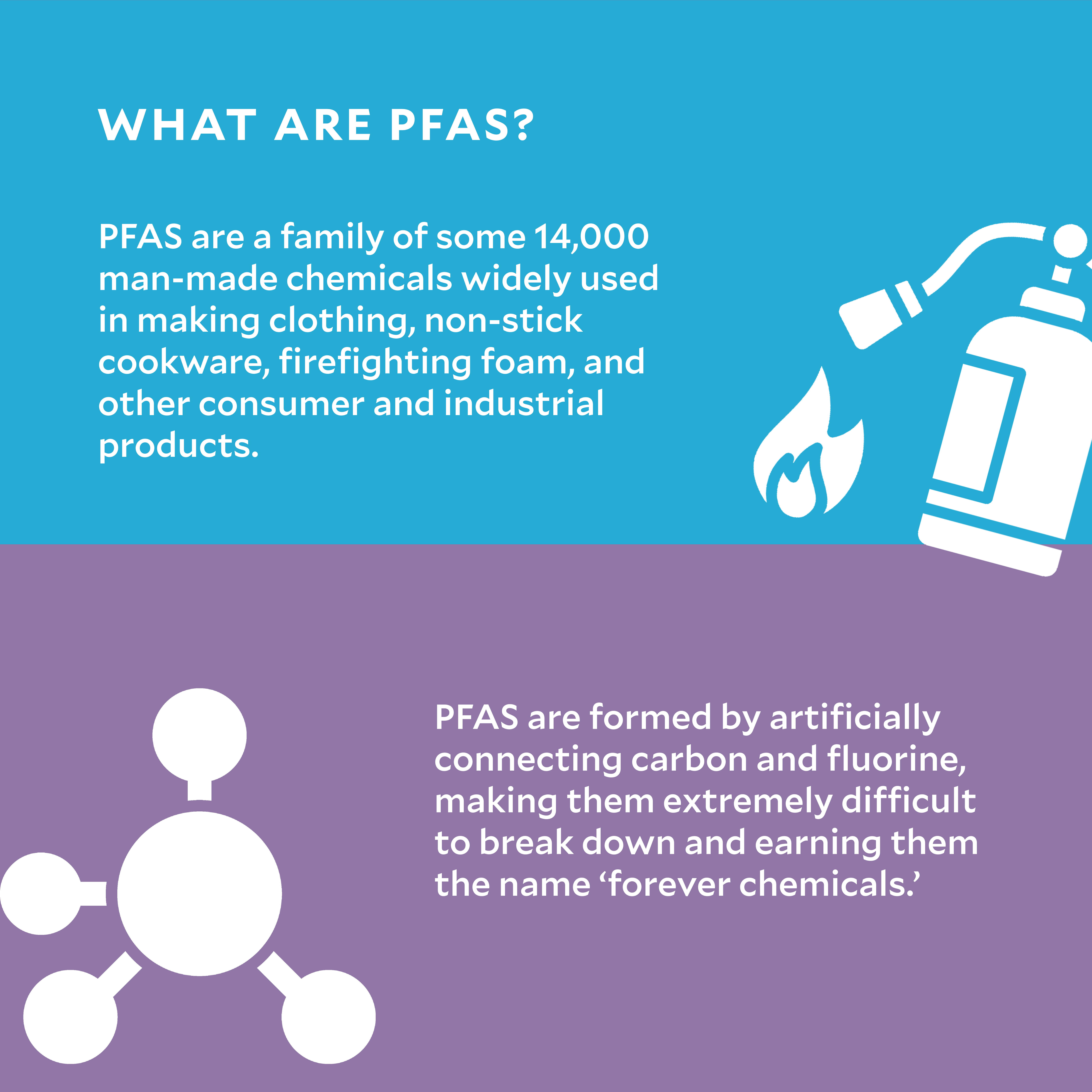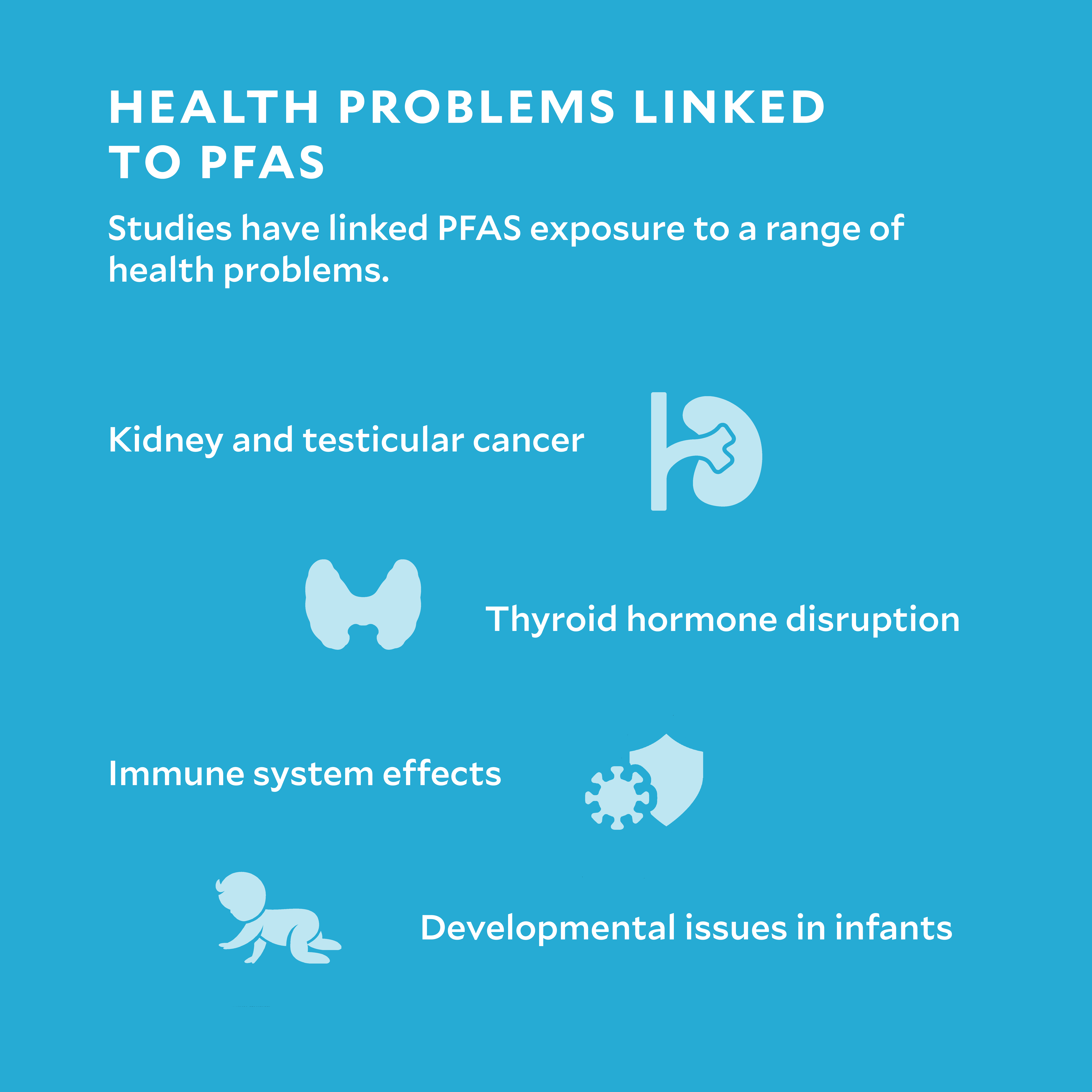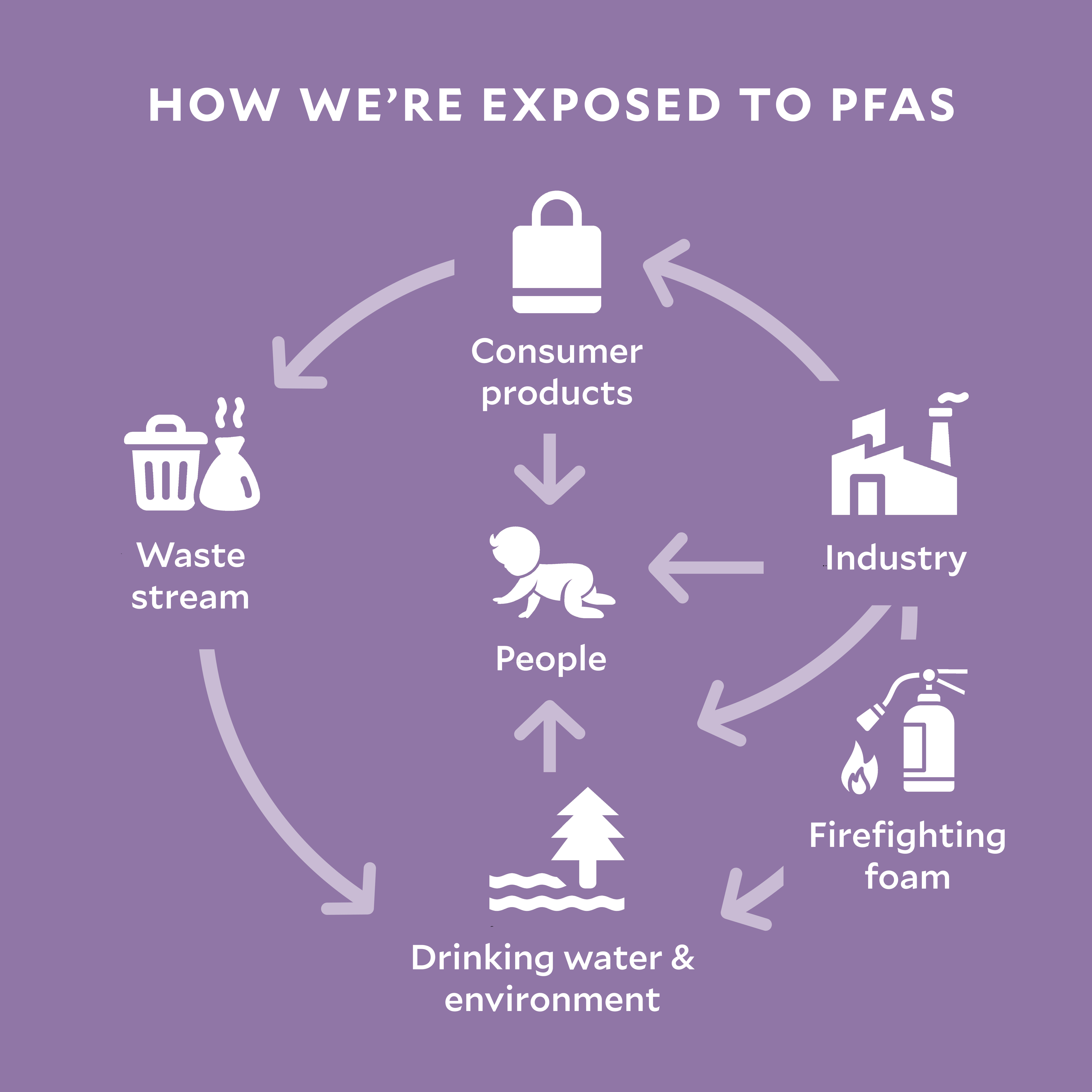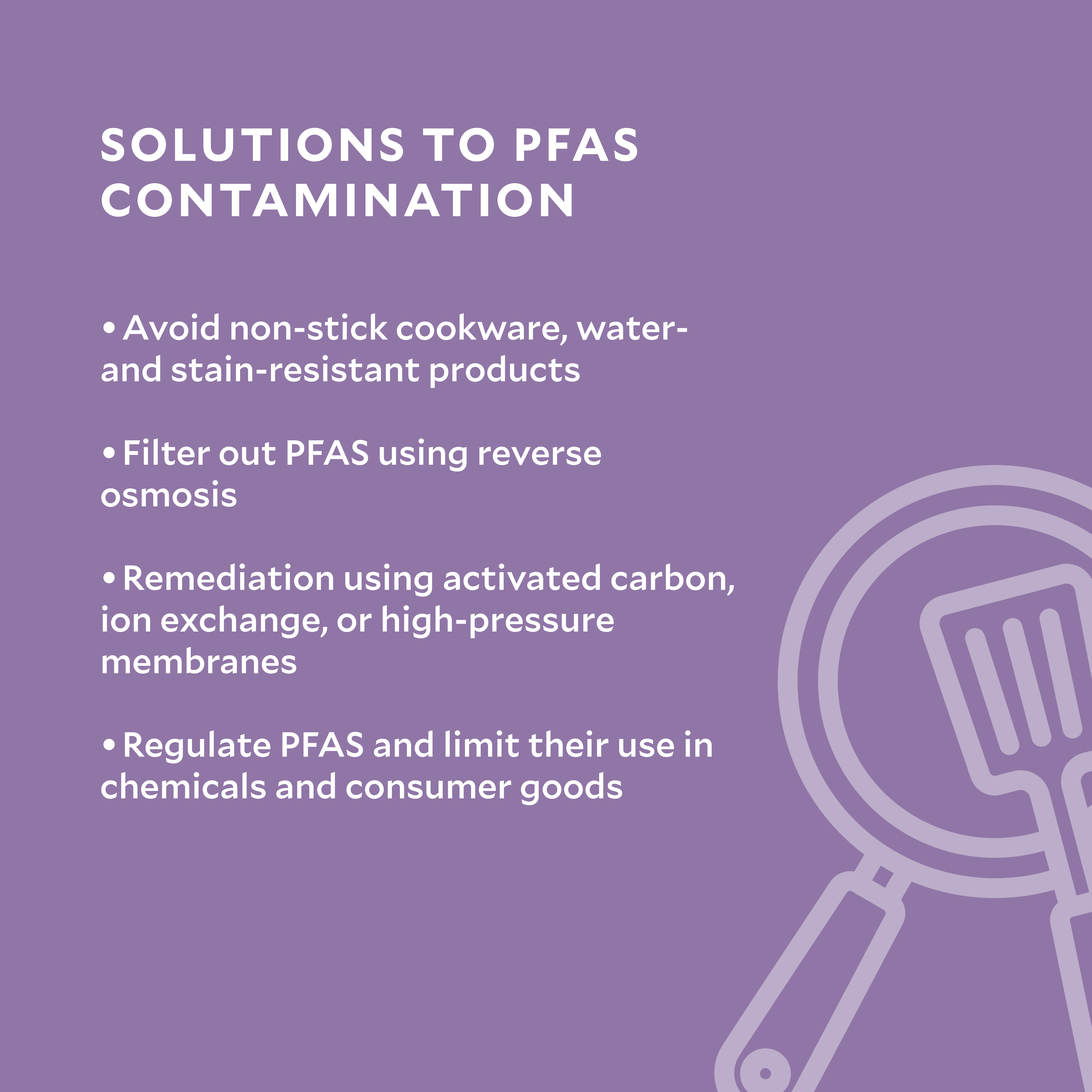
PFAS, also known as “forever chemicals,” have emerged as a serious environmental and public health threat due to their persistence and widespread contamination. These man-made chemicals, widely utilized in consumer and industrial products since World War II, are now linked to alarming levels of contamination in drinking water supplies and health risks ranging from cancers to liver toxicity to reduced fertility.
Following decades of litigation, the U.S. Environmental Protection Agency in 2024 finally set legally enforceable levels for six PFAS chemicals in drinking water, requiring public water systems to monitor for the substances, report findings to customers, and take steps to reduce contamination. However, those regulations were partially rolled back in May 2025.
In this Q&A, two Yale experts delve into the challenges posed by PFAS and potential solutions for reducing exposure and contamination. Vasilis Vasiliou is Department Chair and Susan Dwight Bliss Professor of Epidemiology at Yale School of Public Health (YSPH). Robert Bilott is an environmental attorney and serves as a lecturer with the YSPH Department of Environmental Health Sciences. Bilott’s story and landmark case against chemical giant DuPont were recounted in his book, “Exposure: Poisoned Water, Corporate Greed, and One Lawyer’s Twenty-Year Battle Against DuPont,” and were the basis for the 2019 motion picture “Dark Waters,” starring Mark Ruffalo.
This interview was edited and condensed for clarity.
What are PFAS?
BILOTT: PFAS stands for per- and polyfluoroalkyl substances. They are a completely man-made family of chemicals created around the time of World War II. These chemicals, formed by artificially connecting carbon and fluorine, are known for their strength, stain resistance, grease protection, and water resistance. They are used in a wide variety of products, and there are now estimates of up to 14,000 different PFAS compounds.
Why are PFAS called ‘forever chemicals?’
VASILIOU: PFAS are often called ‘forever chemicals’ because they contain an exceptionally strong carbon-fluorine bond, which makes them highly resistant to breakdown. As a result, they persist in the environment for decades or longer—in water, soil, and even living organisms. Their environmental and biological persistence means they can accumulate over time, raising long-term concerns for ecosystems and public health.

What consumer or industrial products contain PFAS?
BILOTT: PFAS have been used in an incredible array of consumer and commercial products since the 1940s. Common products containing PFAS include non-stick cookware, carpeting, clothing, fast food wrappers and packaging, computer chips, toilet paper, and waterproof cosmetics. Keywords like stain-resistant, waterproof, grease-resistant, and non-stick often indicate the presence of PFAS. These chemicals were not listed on ingredient lists or labels, and many companies were unaware they were using them.
What are the known health risks associated with PFAS?
VASILIOU: PFAS are linked to various cancers such as kidney, testicular, and liver cancer, as well as liver toxicity. There is a rising incidence of early-onset cancers, like colon and liver cancer, in younger individuals, potentially due to developmental exposure. Developmental and reproductive effects of PFAS include low birth weight, accelerated puberty, reduced fertility, and pregnancy-induced hypertension, with possible epigenetic changes that might contribute to early-onset cancers. PFAS also impair the immune system, reducing vaccine effectiveness and potentially increasing susceptibility to infections like COVID-19. Additionally, PFAS exposure is linked to various metabolic effects such as obesity, type 2 diabetes, cardiovascular disease, reduced kidney function, high cholesterol, colitis, and neurodegenerative issues in children.

By some estimates, 90% of drinking water in the U.S. contains PFAS. How did that happen?
BILOTT: PFAS contamination in drinking water primarily comes from aqueous film-forming foam, or AFFF—the firefighting foam that was developed during the Vietnam War to extinguish petroleum-based fires. This foam contains high concentrations of C-8 PFAS chemicals known as PFOA and PFOS that have been widely used by military organizations, airports, and fire stations globally since the 1960s. The people buying and using it were not informed about its PFAS content and were misled about its safety, which led to widespread environmental contamination.
Has a safe level for PFAS chemicals been identified?
BILOTT: No one has identified a safe level of PFAS chemicals. Companies like 3M and DuPont set internal safety guidelines for their employees decades ago, but this information was withheld from government agencies and scientists until much later. Studies have revealed that PFAS are persistent, bioaccumulative, and toxic, affecting multiple organ systems and potentially reducing vaccine effectiveness. The EPA has set very low drinking water standards, aiming for no more than four parts per trillion and ideally zero for PFOA and PFOS, which are now recognized as human carcinogens.
VASILIOU: PFAS chemicals are not metabolized by the body, unlike many other environmental contaminants. Because they resist breakdown and are only slowly excreted, they accumulate in human tissues—especially in the blood, liver, and kidneys—over time. This bioaccumulation contributes to a range of toxic effects, including immunotoxicity, endocrine disruption, and increased risk of kidney and testicular cancer. Given their extreme persistence and potential for harm even at very low levels, efforts to establish safe exposure limits increasingly aim toward zero.
Can the human body repair damage caused by PFAS?
VASILIOU: The human body has some ability to repair tissue damage, but with PFAS, this process is complicated by the chemicals’ persistence. PFAS remain in the body for years and can interfere with normal repair mechanisms by promoting inflammation, oxidative stress, and immune dysfunction. Even if some tissues, like the liver, can regenerate, ongoing internal exposure means that damage may continue, making full recovery difficult—especially with chronic or high-level exposures.

Are any PFAS chemicals regulated?
BILOTT: In 2024, the first federal nationwide regulations for PFAS chemicals were adopted by the EPA, setting drinking water standards and declaring two C-8 PFAS as hazardous under federal Superfund law. The process took decades, with companies pushing back and fighting regulation in courts. States like New Jersey, Minnesota, and Connecticut have also moved forward with regulations, which are facing legal challenges from manufacturers. In Europe, proposed global bans on PFAS face significant opposition due to economic impacts.
What technologies exist to remove PFAS from drinking water?
VASILIOU: Activated carbon and reverse osmosis are the primary technologies to remove PFAS, though reverse osmosis is very expensive for individual homes. Yale engineers are working on innovative solutions, such as membranes and methods to break down PFAS chemicals.

Who is going to pay for cleaning up PFAS contamination?
BILOTT: Our law firm represents hundreds of cities seeking compensation from companies like 3M and DuPont, who created the chemicals. These cases are part of the aqueous film-forming foam (AFFF) multidistrict litigation in South Carolina. Recently, significant settlements totaling over $14 billion from companies like 3M, DuPont, BASF, and Tyco have been reached to help public water systems clean up PFAS. The federal government has allocated $10 billion for this purpose but that is taxpayer money. We are working to ensure the responsible companies pay for the cleanup.
How does someone know if PFAS is present in their drinking water or consumer products?
BILOTT: It’s not always easy. For public water systems, sampling is starting to be required and information may be available in quarterly reports to customers. But many districts haven’t started testing yet. The Environmental Working Group created an interactive map showing where testing has occurred and what the levels are. For consumer products, there’s a lot less information. PFAS were not listed on ingredient labels or material safety data sheets, and even manufacturers might not have known they were using PFAS. Some groups are now testing products for PFAS, and products labeled with buzzwords like waterproof, stain-resistant, non-stick, and grease-proof might contain PFAS. Consumer demand has led some companies to commit to PFAS-free products, but definitions and detection levels vary so that is causing mass confusion in the market.
What can the average person do about the PFAS problem?
VASILIOU: Individuals can reduce their PFAS exposure by avoiding products such as older non-stick cookware, water-resistant clothing, stain-proof textiles, and certain cosmetics that may contain PFAS. It’s also important to be informed about your drinking water—use certified filters that are effective against PFAS and consult local or state resources for water quality information, including bottled water when available. Beyond personal choices, civic engagement plays a powerful role. Raising awareness, supporting legislation, and demanding transparency from manufacturers and regulators can drive meaningful, large-scale change
BILOTT: An individual can make a huge difference by standing up, speaking out, and demanding change. It may take a while, but as you see in the story of “Dark Waters,” individuals speaking out are having a huge impact. Laws are being proposed and passed to restrict these chemicals. Some of the biggest companies on the planet are now committing to getting out of PFAS. That only happened by individuals saying ‘we don’t want this.’
What is Yale doing?
Yale is committed to making the university a healthy and productive place to live, work, and study. We are reducing the amount of harmful chemicals on campus through healthy furniture standards to reduce the amount of chemicals of concern in the materials we purchase to furnish our buildings. The Yale School of Public Health is leading groundbreaking research into the human health impacts of PFAS, analyzing their role in cancer cell migration, liver damage, and pregnancy loss. The Yale School of Engineering and Applied Sciences is developing technologies to separate and destroy PFAS at water treatment facilities and other locations.